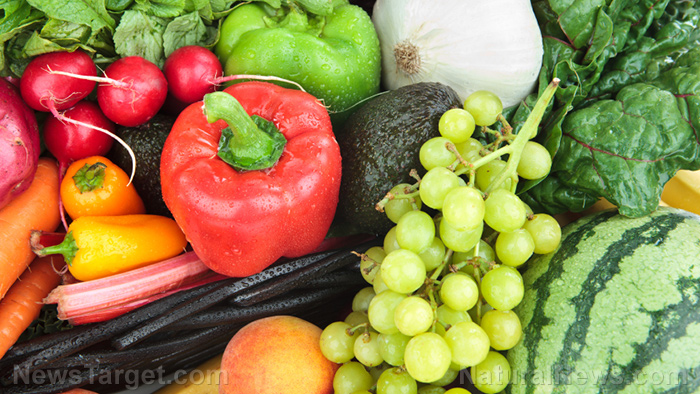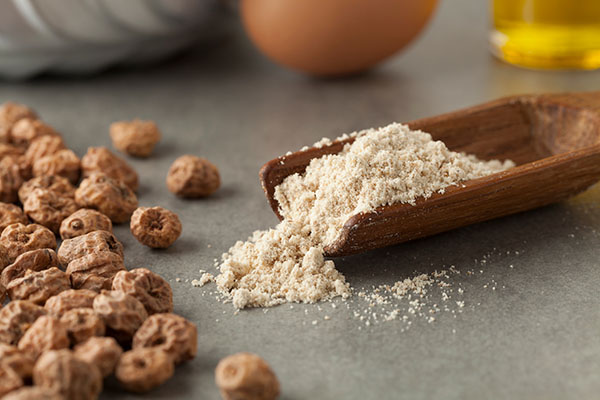
Advertisement
The word antioxidants is a buzzword you’ll frequently encounter these days. It refers to certain chemicals produced by our bodies that provide us with innumerable benefits. Antioxidants were first discovered in the 1900s when researchers were none the wiser about oxidative stress or free radical damage.
In case you’re unfamiliar with these terms: Oxidative stress refers to an imbalance between your antioxidant and free radical levels. Free radicals are unstable yet highly reactive molecules produced as a by-product of cell metabolism. These radicals, when left to their own devices, can damage cells and their components, especially DNA. Researchers now understand that the cell damage caused by free radicals can trigger the development of chronic diseases.
So what do all these have to do with food? A lot. Our bodies use antioxidants to neutralize harmful free radicals. We need to constantly have healthy antioxidant levels to ensure that oxidative stress doesn’t get to wreak havoc on our cells. Although our bodies naturally produce antioxidants (e.g., glutathione and antioxidant enzymes), we also benefit from the antioxidants that we get from food. Some examples of antioxidants usually found in plant-based foods include vitamins C and E and carotenoids like beta-carotene.
Free radicals, diseases and the role of antioxidants
Free radical production inside our bodies is triggered by two things: normal metabolic processes or exposure to harmful substances in the environment. These include cigarette smoke, X-rays, air pollutants, industrial chemicals and ultraviolet radiation from the sun.
Studies have found that in cells, free radical production is continuous, as these are by-products of necessary reactions. These reactions are not only important for cell survival, but they are also involved in processes triggered by our physical activities. For instance, cells produce free radicals when we exercise or when we sustain physical injuries.
Fortunately, we produce natural antioxidants that can stop these free radicals from harming our cells. The antioxidants we obtain from our diet also help protect our tissues from these threats. Without antioxidants, free radical production will trigger certain events that can lead to oxidative stress. These include:
- The activation of certain immune cells that contribute to inflammation
- An increase in enzymes that can generate more free radicals
- The excessive release of free iron or copper ions
- The disruption of molecular systems involved in cellular energy production
According to studies, the damage caused by oxidative stress to cell components like lipids, proteins and DNA is linked not only to premature aging but also to the onset of serious diseases, such as atherosclerosis, cancer, diabetes, rheumatoid arthritis, heart attack, cardiovascular disease, stroke, septic shock and neurodegenerative diseases like Alzheimer’s and Parkinson’s.
Free radical scavengers and their food sources
Different types of antioxidants can be found in plant-based foods. While some of these chemicals serve as plant pigments, others are produced by plants as part of their defense mechanism. Plant-derived antioxidants are often described by researchers as free radical scavengers. This means that they are stable enough to donate a charge to unstable free radicals to reduce their ability to harm biomolecules. Fruits, vegetables, whole grains, nuts, seeds and herbs contain an abundance of these free radical scavengers. Here are some known antioxidant compounds and their plant-based sources.
- Sulfur compounds — found in allium vegetables like onions, garlic, leeks and shallots
- Anthocyanins — found in eggplants, grapes and blueberries
- Beta-carotene – found in carrots, mangoes, spinach and parsley
- Catechins — found in red wine and green or black tea
- Copper — found in nuts
- Cryptoxanthins — found in red capsicum, pumpkin and mangoes
- Flavonoids — found in citrus fruits, onions, apples and green tea
- Indoles — found in cruciferous vegetables like broccoli, kale, cabbage and cauliflower
- Isoflavonoids — found in soybeans, peas and lentils
- Lignans — found in whole grains and sesame seeds
- Lutein – found in green, leafy vegetables and corn
- Lycopene – found in tomatoes, pink grapefruit and watermelon
- Manganese – found in nuts
- Selenium – found in whole grains
- Vitamin A – found in sweet potatoes and carrots
- Vitamin C — found citrus fruits, strawberries, spinach and capsicum
- Vitamin E – found in avocados, nuts, seeds and whole grains
- Zinc – found in nuts
These days, you can find some of these antioxidants being sold as supplements in stores or online.
Antioxidants for mitochondrial disease
A recently published study by researchers at the University of Pennsylvania Perelman School of Medicine and The Children’s Hospital of Philadelphia reported that two antioxidants found in food showed promising results in pre-clinical trials against mitochondrial disease. These antioxidants were vitamin E and N-acetylcysteine (NAC), the supplement form of the amino acid L-cysteine, which can be found in eggs, chicken, sunflower seeds and legumes. NAC is a precursor of glutathione.
For their study, the researchers tested seven antioxidant compounds using cell cultures obtained human patients, and two microscopic models of mitochondrial disease, namely, the roundworm Caenorhabditis elegans and zebrafish. Mitochondrial disease is a chronic disease that’s caused by the malfunctioning of the mitochondria. This is the cell organelle responsible for producing cellular energy. Research suggests that mitochondrial disease is highly variable and can affect any organ. The failure of the mitochondria to produce enough energy results in a variety of symptoms. These include muscle pain and weakness, gastrointestinal disorders, autism, learning disabilities, seizures, vision or hearing problems and serious diseases like diabetes and heart, liver or kidney disease.
The researchers said that oxidative stress plays a huge in mitochondrial disease, so they decided to look at how antioxidants from foods will affect the disease. They found that NAC and vitamin E produced compelling results in the animal models. Aside from prolonging the lifespan of worms with mitochondrial disease, both antioxidants also protected the brains of zebrafish from oxidative damage. Additionally, NAC improved the survival of cultured cells from patients with the disease.
The researchers noted that NAC and vitamin E showed strong antioxidant activities and were able to relieve oxidative stress in cell cultures.
“Both NAC and vitamin E are the lead antioxidant candidates from this work to be evaluated in clinical trials, to determine whether they effectively benefit the survival, function and feeling of mitochondrial disease patients. They may have particular promise to improve the resiliency of the nervous system in patients with malfunctioning mitochondria,” said Marni Falk, the study’s senior author.
Besides NAC and vitamin E, the antioxidant coenzyme Q10 also caused some notable improvements, but it only managed to partially increase the lifespan of C. elegans.
Antioxidants are useful compounds that we need to obtain from our diet along with essential nutrients. These naturally occurring chemicals are not only capable of restoring our antioxidant levels — which can be depleted by poor diet, diseases, infection or chronic stress — but they can also prevent chronic diseases. Antioxidants protect our cells by neutralizing harmful free radicals, and this helps us maintain good health and combat premature aging. To boost your daily intake of antioxidants and lower your risk of disease, switch to a diet rich in fruits, vegetables and other plant-based foods.
Sources:
Advertisements







